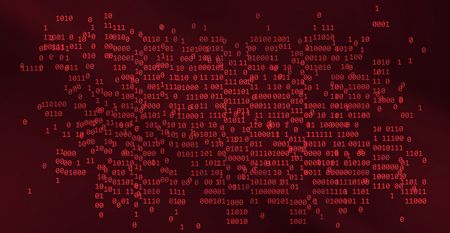When we talk about smart factory, we immediately think about Big Data, Artificial Intelligence, Data Mining and robotics.
Actually, all these advanced manifestations of IT and OT technology are implementable because Factory 4.0 is a natively connected ecosystem and a huge producer of data on whose valorisation - and here we return to the discourse of Big Data and AI - companies base the own efficiency. At the dawn of 2021, there is nothing sci-fi about it: as markets impose mass customization, lots become smaller and smaller, business models are constantly changing (consider, for example, the rise of servitization) as well as the needs of consumers, relying on data to maximize production efficiency is no longer a peculiarity of a few enlightened companies, but a kind of need for all.

Among the cases of data enhancement, remote support has a huge impact on the efficiency of the entire productive ecosystem. The concept of remote monitoring is simple to understand and derives from the synergy between the sensors of the Industrial Internet of Things (IIoT) and the algorithms of Artificial Intelligence: the former are responsible for generating and transmitting data on the real operating conditions of industrial machinery, while the algorithms of AI and Machine Learning proceed to an enhancement of the same in order to make the process more efficient. In this way, the company or an external provider can analyse shopfloor data, turn them into useful information, act accordingly and achieve results such as reducing costs and maintenance time, downtime abatement and process efficiency.

Predictive maintenance and process optimization
Remote support, combined with data enhancement, enable the so-called predictive approach, which in practice is manifested mainly in maintenance. We have dedicated a specific study to it, to which we refer but add an interesting aspect: when a fault occurs, one of the factors that most affect downtime is the procurement of components, which are not always available. Predictive maintenance allows to identify, by excessive overheating, vibration or a set of parameters out of scale, a potential cause of failure well before the stop occurs, immediately identifying the component subject to wear and facilitating its replenishment.

Although this is a typical use case of great value, predictive maintenance is only one of the remote monitoring services: we think, for example, the increasingly frequent use of augmented reality systems to create a collaborative connection between process or machine specialists and those who actually work one field. This can be applied in a variety of areas: for training, for example, for quality control, or to remotely instruct field workers and thus implement fast and effective solutions to a problem, minimizing or completely avoiding downtime. Finally, another very interesting aspect of remote support is the optimization of the entire production process: remote monitoring is not limited, in fact, to individual machines but can cover the entire work cycle, which is evaluated in terms of efficiency, monitored in real time and, in the case of potential inefficiencies, optimized through dedicated interventions.

From cost reduction to uptime, the benefits of remote monitoring
Many benefits of remote support have already been mentioned: responsiveness to any issues, efficiency, predictive maintenance and less downtime. In more detail, here are the three most significant:
It is in fact one of the cornerstones of efficiency, which - simplifying - remains the relationship between productivity and costs. Real-time monitoring of the production line, both at the level of single machinery and process, leads to cost optimization: less maintenance, adequate use of all machinery and reduction of downtime are the main causes.
Another direct consequence of a correct monitoring of the production process is the maximization of uptime, from which an improvement of the productivity and, consequently, of the OEE (Overall Equipment Effectiveness).
The crossing time is a key parameter of production efficiency, because - in a broad sense - it represents the time that the company takes to meet the customer’s needs. Monitor in real time the activity of the shopfloor, processes and machinery, and intervene promptly in case of need aligns the company’s activity to the needs of customers.
AMADA and the Remote Services
The correct mix of hardware and software allows AMADA to guide the transition to the 4.0 industrial model. Remote assistance is one of the services that the company makes available to its customers going beyond the traditional modes of delivery. In fact, thanks to the synergy between IIoT sensors and advanced analysis algorithms, AMADA transforms data into information and governs them in real time to ensure its customers maximum production efficiency, reduce maintenance costs and downtime. On a practical level, AMADA remote services include predictive maintenance, monitoring the operating conditions of individual components, machinery and entire processes, which guarantees maximum reliability even in the face of particularly intense and challenging rhythms, typical of today’s markets. In addition, advanced cybersecurity systems ensure accessibility, security, data integrity and protection, essential factors in connected and smart ecosystems such as today’s.